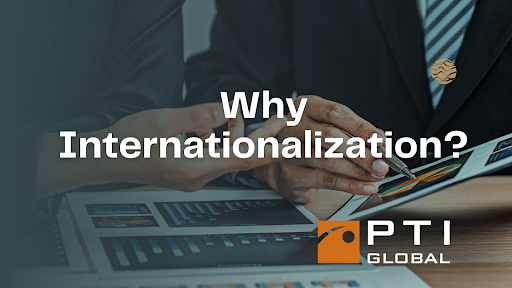The Essentials of Internationalization in Software Development
PTIGlobal, has had the opportunity to work with some of the world’s largest companies, helping them make their software accessible to global audiences. Internationalization, or “i18n,” is our specialty, and we’ve successfully internationalized a wide range of products and apps for our clients. Here’s why internationalization is critical to software success and how we address common concerns from product managers and developers.
“Our product is only launching in English.”
It’s easy to assume English is enough, but internationalization is about more than language. It ensures your software functions seamlessly for users worldwide. Limiting your product to English can create challenges such as:
- Date and Time Confusion: U.S. formats may not work well for international users.
- Data Sorting: Sorting rules vary by country, and what works in one place may not elsewhere.
- Multilingual Input: Your product should handle text in different languages smoothly.
- Future-Proofing: Planning for internationalization early is far more cost-effective than trying to add it later.
Many of our clients initially planned to stick with English, only to realize the value of expanding to international markets later.
“Our software is only for the U.S. market.”
Even if you’re targeting U.S. users, internationalization still matters. The U.S. is home to speakers of many languages, and catering to this diversity can unlock new opportunities:
- Big Market Potential: We’ve helped clients tap into significant markets by supporting Spanish, Chinese, and other languages spoken in the U.S.
- Easier Translation: Building the infrastructure for internationalization now makes future translation much smoother.
“We outsource localization, so we’re covered.”
Outsourcing localization may seem like an easy solution, but if your product isn’t internationalized, the process becomes costly and time-consuming:
- Extra Work: Without internationalization, your product will require lots of manual effort during localization.
- Cost Savings: By building internationalization into your product from the start, you make content extraction and translation faster and cheaper. We’ve seen firsthand how this saves our clients both time and money.
“Our users don’t mind that the interface is in English.”
It’s not just about the interface—internationalization affects the entire user experience:
- Know Your Audience: If you plan to expand your audience, understanding their needs, including language preferences, is key to growth.
- Market Insights: Some clients have found that adding more language options revealed new demand they hadn’t initially considered.
Why Internationalization Should Be a Priority
We believe internationalization should be a core part of your product development process, not an afterthought:
- Avoid Extra Work Later: Incorporating internationalization early helps avoid costly revisions later.
- Best Practices: We pay close attention to text formatting, font choices, and content flow to ensure a smooth experience for all users.
- Beyond Software: We’ve also internationalized documents, e-learning courses, and more. The benefits go beyond just apps.
Key Considerations for Software Internationalization
When we internationalize software for our clients, we focus on several key areas:
- Character Encoding: Ensuring your software can handle a variety of languages is essential.
- Flexible UI: We help design user interfaces that adapt to different languages and cultural contexts.
- Text Handling: Proper text display is critical when dealing with multiple languages.
- Resource Files: Using the right file formats ensures seamless localization.
In Conclusion
At PTIGlobal, we know internationalization is more than just translation. It’s about creating software that’s flexible, adaptable, and ready for global markets. By working with us, you’ll build products that are easier to localize, more accessible, and positioned for success internationally.









